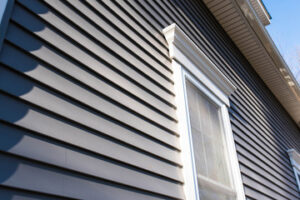Whether gracing the crisp lines of modern architecture or accentuating the quaint charm of a historic home, white vinyl siding adapts seamlessly to a variety of architectural styles. Its neutral tone complements roof and trim colors for a cohesive exterior.

Choose a quality contractor and invest in premium vinyl siding to enjoy its benefits for years to come. This includes increasing your home’s resale value and reducing energy costs. Contact Vinyl Siding Richmond for professional help.
Most homeowners spend more time on their home’s interior than they do with its exterior, but a house’s façade is crucial to its curb appeal, energy efficiency and resale value. That’s why many choose vinyl siding, a durable cladding material that holds up to the elements and requires minimal maintenance. However, like any building material, vinyl has its pros and cons. Here, we’ll take a look at how long vinyl lasts, how it’s affected by environmental factors, and the best ways to protect your investment.
The average lifespan of vinyl siding depends on several factors, including installation techniques and climate conditions. A professional installation and regular maintenance are the best way to keep your vinyl looking and functioning its best. The longevity of vinyl also depends on the type of product you buy – a higher-grade product will last longer than lower-quality versions.
Vinyl is an incredibly strong and durable cladding material that can hold up to high winds, hail and freezing temperatures. The material is also resistant to fading, scratching and staining, and is available in a wide range of colors that will fit any aesthetic. In addition, it can be cut to accommodate tight or unique spaces that may not be suitable for other types of cladding.
Like wood, vinyl has a distinct appearance that can complement any architectural design and style. However, its main drawback is that it is not as eco-friendly as other options. Its polyvinyl chloride (PVC) composition can take centuries to break down in landfills, and the manufacturing process releases toxins into the environment. Other alternatives, such as fiber cement and engineered wood, offer better environmental protection while still offering the visual appeal of natural wood.
Depending on the climate, vinyl can be vulnerable to warping and melting, particularly in areas with extreme temperatures. If you notice that your vinyl is warping or discoloring, it’s a sign that it’s time for replacement. In addition, if you find mold, mildew or other signs of moisture intrusion, that’s another reason to get new vinyl as soon as possible.
Aesthetics
Aside from its durability and affordability, vinyl siding is available in a wide array of colors and textures to suit homeowners’ unique aesthetics. From rustic charm to a clean modern flair, the right color and style can help highlight desirable architectural features and add visual appeal. A wide variety of trim options are also available to create a cohesive and appealing exterior.
Choosing the right vinyl siding color requires careful consideration of many factors. Not only should it complement the architectural style of the house, but it should also take into account local climate conditions. For example, homes located in areas with intense sunlight should consider light shades to prevent fading and discoloration over time. Conversely, homeowners in colder climates may benefit from darker shade options that can help absorb heat and reduce energy costs.
When choosing a vinyl siding color, it’s important to keep in mind that the appearance of any color can vary depending on lighting conditions. Using an online home visualization tool to test a siding color in different weather conditions can help homeowners get a better idea of how it will look when applied to their homes.
White vinyl siding is an excellent choice for those looking to refresh their home’s exterior with a classic and timeless look. Its pristine appearance can stand out against a lush landscape or provide a striking contrast to a vibrant roof color. In addition, it pairs well with a variety of other materials and textures, such as wood accents or natural stone.
For those interested in a more personalized look, specialty vinyl siding styles like log cabin, board and batten, and cedar shake offer distinctive options that can elevate a home’s curb appeal. These unique texture options offer a dimensional appearance with the added benefits of low maintenance and weather resistance.
Maintenance
Vinyl is an ideal option for homeowners who prefer to take a hands-off approach to home exteriors. Unlike wood siding, which is prone to warping and peeling, vinyl requires minimal maintenance. Cleaning is typically the only effort required, and it can be completed with a soft brush and a combination of water and vinegar. In some cases, a solution of laundry detergent or powdered household cleaner may be necessary to remove more stubborn stains.
In addition to cleaning, regular visual inspections are recommended to identify any damage or wear that can be addressed before it worsens. Inspecting for broken panels, cracks, warping and discoloration can help to prolong the life of your siding and reduce energy bills.
During your inspection, be sure to check the integrity of your vinyl siding. If your siding is loose or cracked, this can lead to water leaks and mold growth. In some cases, it can also affect the appearance of your home and make it look unappealing. Additionally, you should inspect your vinyl siding for signs of fading.
Vinyl siding is color fast, but sun exposure can cause the colors to fade over time. If the fading is severe, it may be time to consider replacing your vinyl siding with a more energy-efficient option that can improve the curb appeal and value of your home.
If you decide to replace your vinyl siding, a professional installation is essential to ensure long-term durability. Proper installation techniques include leaving a gap at the ends of each panel, using J-channel around windows and doors, and crimping or nailing the trim pieces to ensure a secure, weatherproof fit. It is also important to use corrosion-resistant nails and staples, and to install sill trim at the soffits.
Finally, be sure to check your vinyl siding after a heavy storm to see if any panels have come loose or are damaged. If you notice any damage or fading, it is best to have it repaired right away before the problem worsens. With proper care and inspection, your vinyl siding can last for decades.
Energy Efficiency
A quality vinyl siding product is a good choice to help your home become more energy efficient. This is because it provides an excellent insulating barrier that helps keep warm air in during the winter and cold air out during the summer. It also keeps your heating and cooling systems from having to work overtime, which can save you money on your energy bills over time.
In addition to its energy-saving properties, vinyl siding is also a green building material. It can be recycled, and it does not require painting or staining, which means that it does not release harmful chemicals into the environment when it is removed from your home. Additionally, since vinyl does not require caulking, you can avoid the additional cost of labor associated with this task.
When installed correctly, insulated vinyl siding offers superior insulation that can reduce your energy costs significantly. It prevents the loss of heat between wall studs that occurs in many homes, a process known as thermal bridging. Without the proper insulated siding, heat seeps into the house during the summertime and escapes in the wintertime, forcing your HVAC system to work harder to maintain a comfortable temperature.
VSI has worked tirelessly to get insulated vinyl siding recognized by the energy code as continuous insulation, and it is now approved for use in most climate zones. It can be used in combination with other insulating products to achieve the R-value required by the code.
Installing insulated vinyl siding is a professional job, and it should be done by an experienced contractor. Before installing your new insulated siding, draw a chalk line along the base of your wall and make sure to follow it when cutting your vinyl panels. This will ensure a clean, consistent look and a tight fit that can minimize air leakage. Once your panels are cut, they should be nailed together with corrosion-resistant nails and overlapped by an inch to accommodate expansion and contraction of the material.
In addition to reducing your energy bills, a properly installed insulated vinyl siding will add value to your home and provide you with an attractive and durable home improvement solution.

